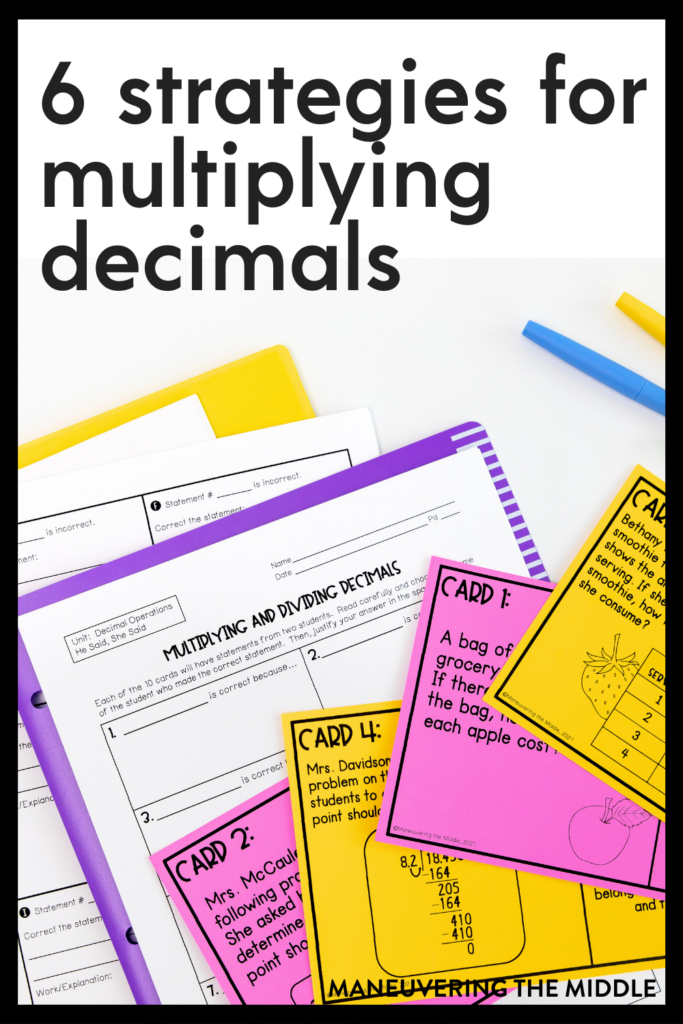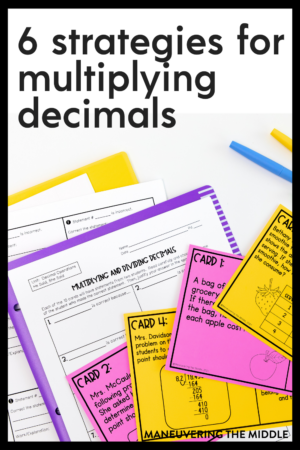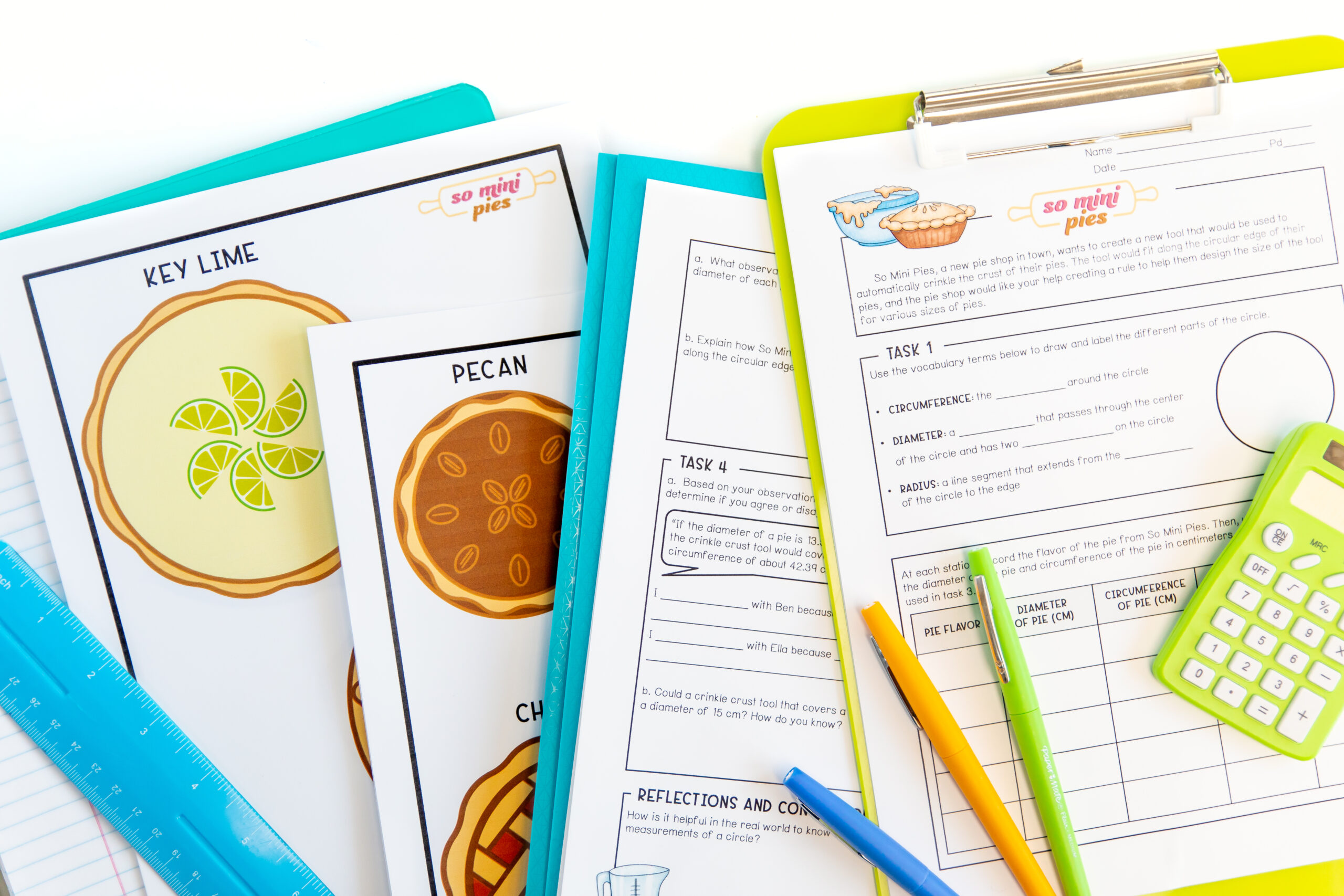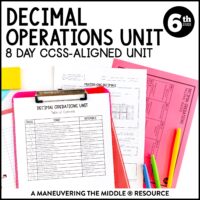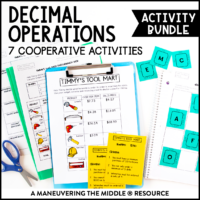There are so many ways to successfully teach multiplying decimals. This skill is introduced in 5th grade, so let’s talk about 4 strategies to make sure this concept is understood beyond the standard algorithm (which I love too).
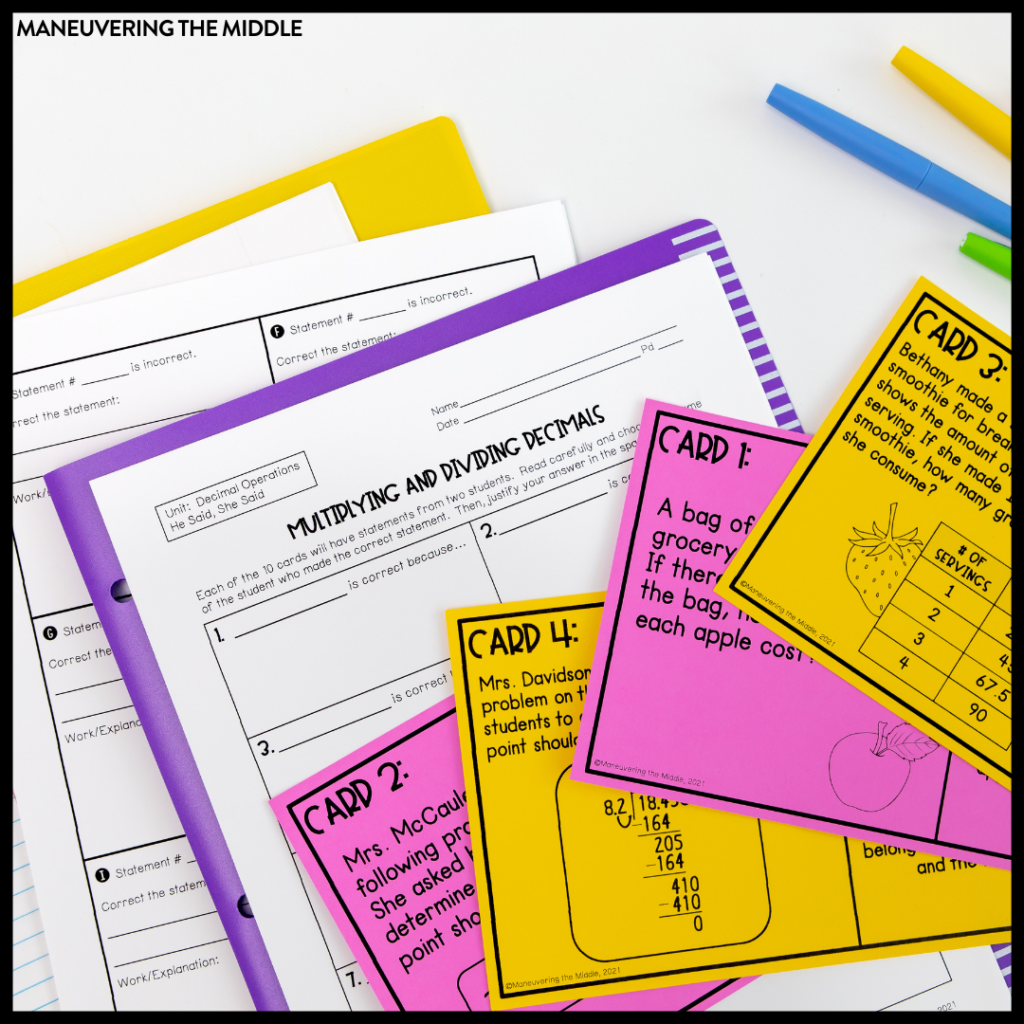
If you want to jump straight into the standard algorithm and call it a day, I think you will most likely feel a little frustration when students struggle to place the decimal. Often my students confuse the rule for placing the decimal point in a product with how they place it in an addition problem. We will cover some ways to combat that below.
Here are the 6 strategies for teaching multiplying with decimals.
Decimal by Whole Number Strategies
My first recommendation is to start with multiplying a whole number by a decimal. Even better, start with coins! At this point, students have been working with money for years. Give a scenario like “A piece of gum costs $0.25. What would 3 pieces of gum cost?” You can ask your students to write BOTH an addition and multiplication expression to solve this problem. That’s where the first strategy comes in:
1. Models
Just like coins, base ten blocks are going to be pivotal for decimal multiplication. The Concrete, Representation, and Abstract method would definitely say to start with actual base ten models, but if you don’t have these, your students can always draw them as shown below or use this online version.
One thing to remind students is that ten base 10s or 100 unit cubes equals 1 whole.
2. Number Lines
A number line is another way to model multiplying a whole number times a decimal. The decimal factor will be the length of the jump and the number of jumps is the whole number. This is great for smaller numbers. I found that students who liked this method felt more comfortable because they were able to add up the numbers as they went – a small scaffold if you will.
3. Distributive Property (Box Method)
Using the distributive method for multiplying a whole number and a decimal was beloved by some of my students. Usually, these students already preferred this method for multiplying two whole numbers, so they were able to build off of previous knowledge. I wouldn’t introduce this method with decimals until my students could do it with whole numbers first.
You could skip the box method and just use the distributive method (though I think the box method keeps everything organized).
Decimal by Decimal
4. Area Model
This is the best way for decimal by decimal multiplication to be shown conceptually. Because area models work with whole numbers so well, then we can apply the same idea to decimals.
We are going to model 0.3 horizontally and 0.4 vertically. The overlap is the product = 0.12
But what about for numbers greater than 1? You are going to use the exact same method; you will just need to extend your 100s grid to represent the whole numbers. For example, 2.4 will need three 100s grids. If it is not clear, the teal portion below represents the product.
For Any Type of Decimal Multiplication
5. Estimation
One way that I required students to show work was to check using estimation. I kept things simple by asking students to tell me what the product would be if we only multiplied the whole numbers. Example: 22.5*4.1 would be 22*4=88. Our product would need to be close to 88, so if a student told me the answer to 22.4*4.1 was 9.225, I could tell them to place the decimal point in a place where 88 would make sense in terms of their estimation.
6. Standard Algorithm
The standard algorithm exists for a reason. It is practical and efficient! While I think the estimation technique is great in most cases for figuring out the decimal placement, it is not always the best method. Which leads me to ask the question – is there a universal name for the little swoops we do to count the total number of decimal placements that need to exist in the product? I’m not sure, but you can see below how I like to write it out.
My final tip is to have students practice using graph paper (you can just print graph paper) to keep their work more organized. My final final tip is to use X as a placeholder instead of 0 because that zero causes frequent errors!
How do you teach decimal multiplication?
